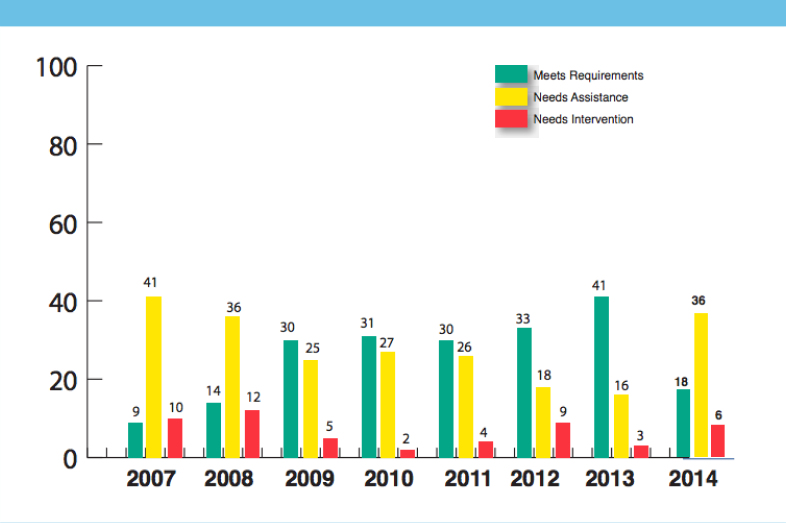

The number of states in compliance with federal special education rules dropped from 38 to 15 after implementation of tougher regulations today, according to a U.S. Department of Education report. The findings are part of a renewed push to help special ed students, who comprise roughly 13 percent of all public school kids in the U.S., in the form of new state regulations that take into account the achievement of students with disabilities.
“In too many states, the outcomes of students with disabilities are simply too low,” U.S. Secretary of Education Arne Duncan told reporters.
Through the Individuals with Disabilities Education Act, the department can require states to demonstrate compliance with the federal law in order to earn their share of the $11.5 billion IDEA funnels to states to educate students with disabilities. States will now be required to have special education students take the same standardized students as other peers, to close the academic performance gap, and to improve the outcomes of special education students on the National Assessment of Education Progress (NAEP).
[For more on special education resources, check out EWA’s Topics Page, which is chock full of story ideas, primers and studies on students with disabilities.]
According to Duncan, this is the first time NAEP results will be used in an accountability framework for any group of students. Dorie Nolt, the department’s press secretary, explained in an email that relying on NAEP is temporary. “Once the new state assessments are in place, we plan to transition to using those data to measure growth in the proficiency of students with disabilities in reading and math, along with other measures,” she wrote.
The department’s new calculations show three states in particular will need intervention given the low performance of their students with disabilities in the 2012-2013 school year: California, Delaware and Texas. The District of Columbia also needs intervention. States that are out of compliance with the new IDEA regulations for three consecutive years may lose portions of their federal special education dollars and have to submit a corrective education plan to the department.
[EWA featured a a series of panels on covering special education. Read this post on teaching special education students alongside kids with no disabilities.]
The following states met requirements: Florida, Georgia, Indiana, Kansas, Massachusetts, Minnesota, Missouri, Nebraska, New Hampshire, New Jersey, Pennsylvania, Vermont, Virginia, Wisconsin and Wyoming.
The federal government will provide $50 million in technical assistance over several years to help states beef up their compliance measurements.
At the crux of the new guidelines is the department’s belief students with disabilities can reach high levels of achievement if they’re taught to strong standards, given equal access to resources, and educated by teachers who believe in them, according to Michael Yudin, assistant secretary for the office of special education and rehabilitative services.
The Washington Post and The Huffington Post have more on this development.